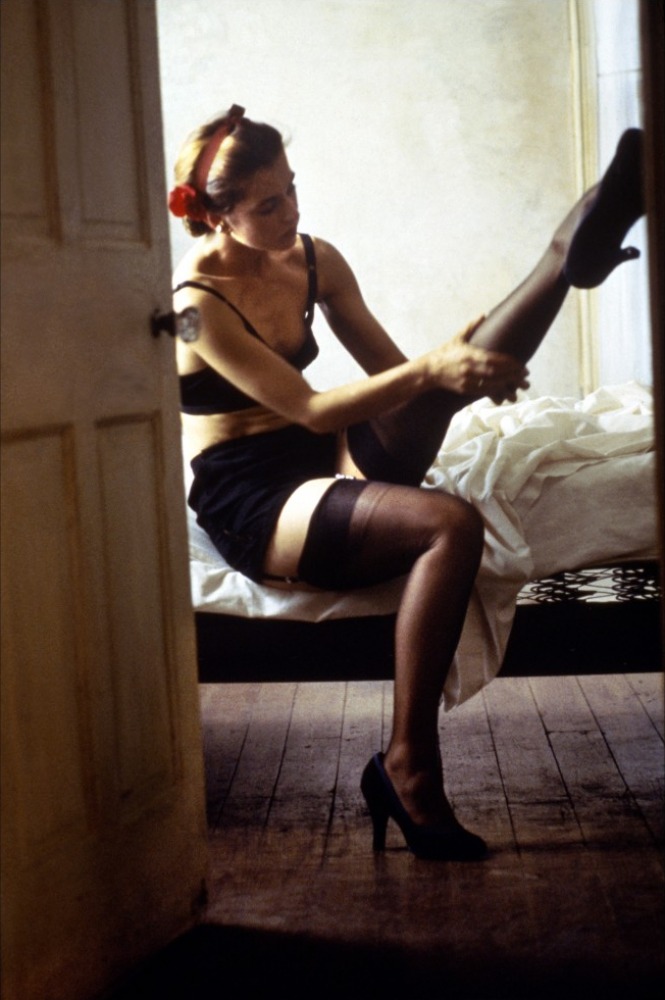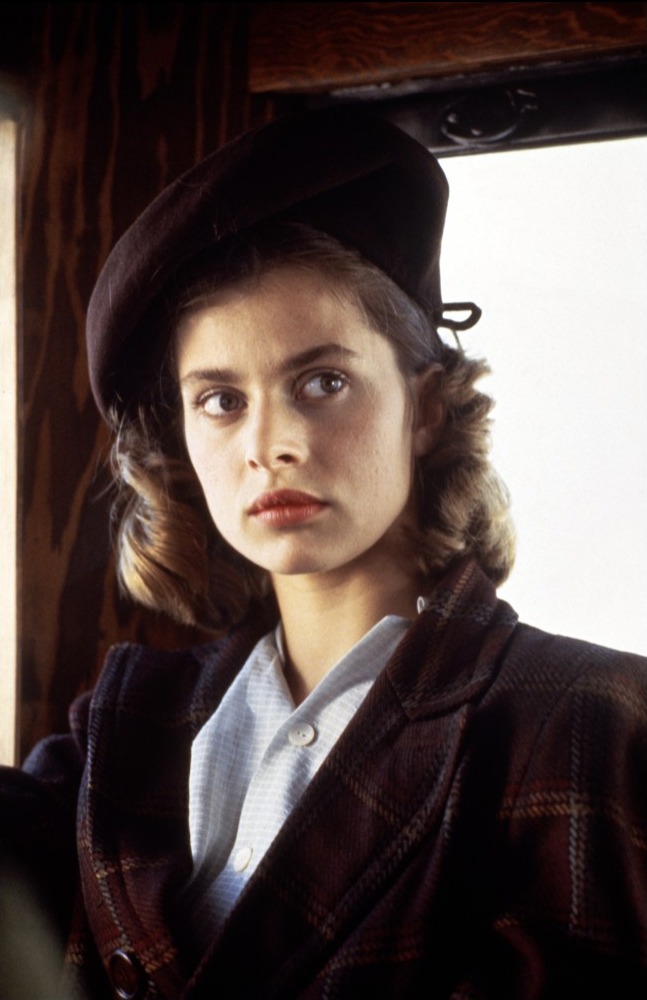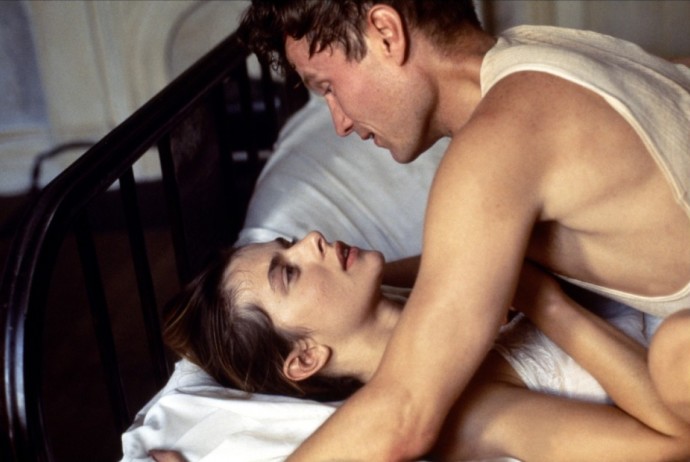Dir: Andrei Konchalovsky
Star: John Savage, Nastassja Kinski, Keith Carradine, Robert Mitchum
“When I came to Hollywood, no one knew me, basically, except for Kinski. She was just coming up as [a] star, and she asked me if I would do something with her. I had this script which I had planned to make in Europe with [Isabelle] Adjani. Kinski was hot, so I got some clout, and finally Menahem Golan said, “Set the story in America and we will do it.” But I thought it would not be right in truly American society, these characters, too emotional, so I put it in a Yugoslav enclave.”
— Andrei Konchalovsky, quoted in Baby I Don’t Care, by Lee Server
 The Cannon Group studio of Menahem Golan and Yoram Globus was not exactly renowned for its art-house output, being better known as home of the Death Wish franchise and no small number of Chuck Norris films. But, for some reason, Golan-Globus also had a good relationship with Konchalovsky, who had been a collaborator with Andrei Tarkovsky, and he directed several films for the company, of which Maria’s Lovers was the first. Indeed, it was Konchalovsky’s first English-language feature, and is a rather lugubrious tale of GI Ivan Bibic (Savage), who returns from war to marry Maria Bosic (Kinski), the woman whose image kept him going through time spent in a Japanese POW camp, only to find himself unable to perform sexually with his new bride. One can only wonder what Charles Bronson would have done in the same situation. It would probably have involved a pool ball in a sock.
The Cannon Group studio of Menahem Golan and Yoram Globus was not exactly renowned for its art-house output, being better known as home of the Death Wish franchise and no small number of Chuck Norris films. But, for some reason, Golan-Globus also had a good relationship with Konchalovsky, who had been a collaborator with Andrei Tarkovsky, and he directed several films for the company, of which Maria’s Lovers was the first. Indeed, it was Konchalovsky’s first English-language feature, and is a rather lugubrious tale of GI Ivan Bibic (Savage), who returns from war to marry Maria Bosic (Kinski), the woman whose image kept him going through time spent in a Japanese POW camp, only to find himself unable to perform sexually with his new bride. One can only wonder what Charles Bronson would have done in the same situation. It would probably have involved a pool ball in a sock.
Of course, we are dealing with a profound implausibility at the very core of the movie: that a virginal Nastassja Kinski causes erectile dysfunction. Yeah. I’m finding myself struggling with that concept a bit, and wonder if casting a slightly-less attractive actress might have helped with the disbelief. Admittedly, part of the point is that it’s Ivan’s idealized image of Maria which is the problem, coupled with his apparent case of PTSD, back when it was still called “shell shock.” The film opens with clips from John Huston’s documentary, Let There be Light, showing interviews with returning veterans, on to which Ivan’s presence has been tacked, and his sleep is peppered with nightmares – the most ludicrous of which sees Savage cramming half a fake rat into his mouth. Still, it’s a fairly specific disorder in its symptoms, Ivan both apparently functioning better than many vets, and also having no issues with other women, judging by an early fling with a family friend.
But he marries Maria, despite his father (Mitchum, filling in for an unwell Burt Lancaster) believing her to be “too good for him,” and that’s when everything starts to fall apart, as the stress of his problem grinds incessantly on the newlyweds. Not helping matters is the presence of her former boyfriend (Vincent Spano), who still carries a torch for Maria, or the arrival of an itinerant musician, Clarence Butts (Carradine), who can apparently cause pantie-wetting with the drop of a minor chord. After Maria has experimented with self-pleasuring, it’s Clarence who seduces her, though apparently racked by guilt, she tosses him out of the house immediately. Not soon enough, however, for the pregnancy which results, though Ivan is now off working in a hellhole slaughterhouse (alongside a very young John Goodman). After an uncomfortable encounter with his heavily-pregnant wife, Ivan’s dying father makes an emotional plea for them to reunite. And, hey, it turns out that knowing Maria was no longer an untouchable goddess was all Ivan needed to get it up. Who knew?
 It apparently took four scriptwriters to come up with this nonsense, along with uncredited work by Floyd Byars, according to the IMDb. Beside Konchalovsky, there was Gerard Brach, who was one of the writers on Tess, Paul Zindel and Marjorie David. Quite why it took so many fingers on the typewriter to come up with this, it’s hard to say, because there’s nothing particularly complex or demanding about the storyline, which is not much more than “boy meets girl” stuff. Nor, to be honest, is there much of interest in the plot. What the film does have, fortunately, are a slew of good performances, probably topped by Savage. While the situation in which he finds himself may stretch the viewer’s credulity, there’s no denying the sense of real pain which results. He first achieves the nirvana of marrying his childhood sweetheart, only for things to implode in a welter of guilt, recriminations and sexual paranoia (albeit the last eventually proving fully justified), and you can’t help but feel for the man.
It apparently took four scriptwriters to come up with this nonsense, along with uncredited work by Floyd Byars, according to the IMDb. Beside Konchalovsky, there was Gerard Brach, who was one of the writers on Tess, Paul Zindel and Marjorie David. Quite why it took so many fingers on the typewriter to come up with this, it’s hard to say, because there’s nothing particularly complex or demanding about the storyline, which is not much more than “boy meets girl” stuff. Nor, to be honest, is there much of interest in the plot. What the film does have, fortunately, are a slew of good performances, probably topped by Savage. While the situation in which he finds himself may stretch the viewer’s credulity, there’s no denying the sense of real pain which results. He first achieves the nirvana of marrying his childhood sweetheart, only for things to implode in a welter of guilt, recriminations and sexual paranoia (albeit the last eventually proving fully justified), and you can’t help but feel for the man.
The other performances are somewhat less memorable, largely because they’re more restrained, probably for the best. It’s nice to see, for the first time in a while, Kinski paired with a man of her own age – or, at least, relatively so, Savage still being her elder by more than a decade, though he plays younger than that. She does capture the wild-eyed innocence of youth nicely, and it’s hard to resist the imagery of a stocking-clad Nastassja, writhing around on the bed like a serpent. That’s appropriate, since here she is like Eve, whose quest for forbidden knowledge brought about her expulsion from paradise, along with her husband. I dunno. I may be stretching a bit here, visions of Richard Avedon photos bubbling around my subconscious. There may also be an element of art imitating life here: according to Konchalovsky, Kinski was having a love affair during shooting with Spano “and she had a baby from that.” Which must come as a surprise to the baby’s acknowledged father, Ibrahim Moussa, though he was rumored at the time to be responsible.
There’s no denying that Konchalovsky brings a distinctly European feel to what is a very blue-collar American location, Brownsville, Pennsylvania [the house used in the film is still standing there, albeit in rundown condition]. It’s certainly easy to see how it was originally conceived as an Old World film, and the attempt to shoe-horn it into American culture can’t be described as enormously successful. However, it does just about skate past, on the strength of some good performances and effective period atmosphere.
